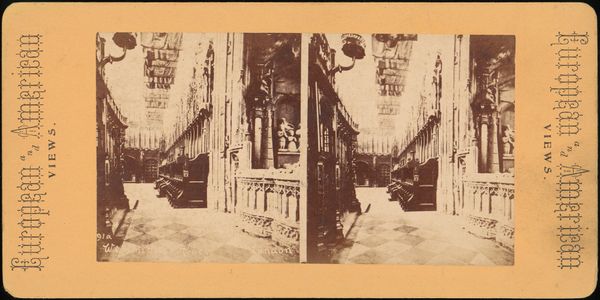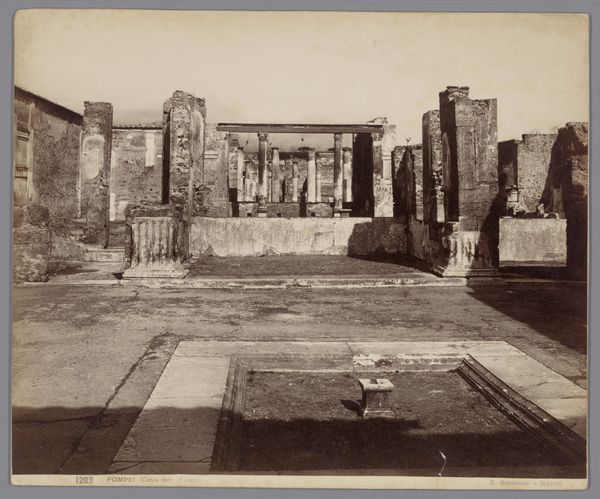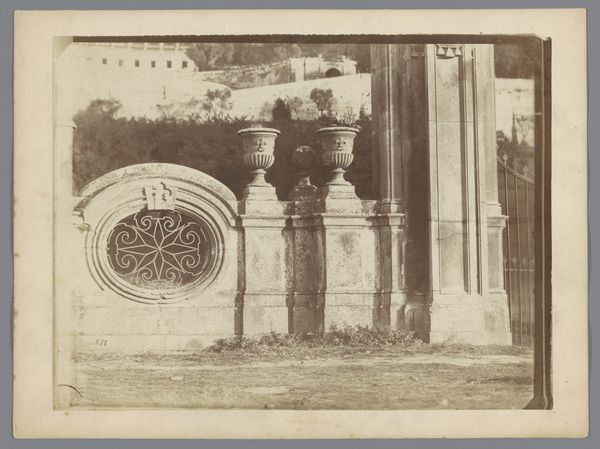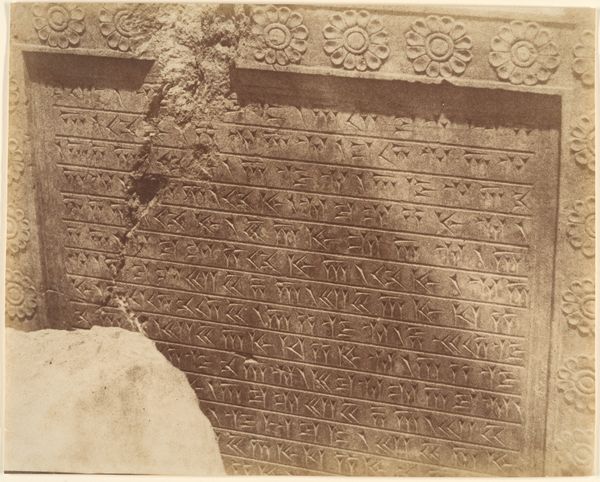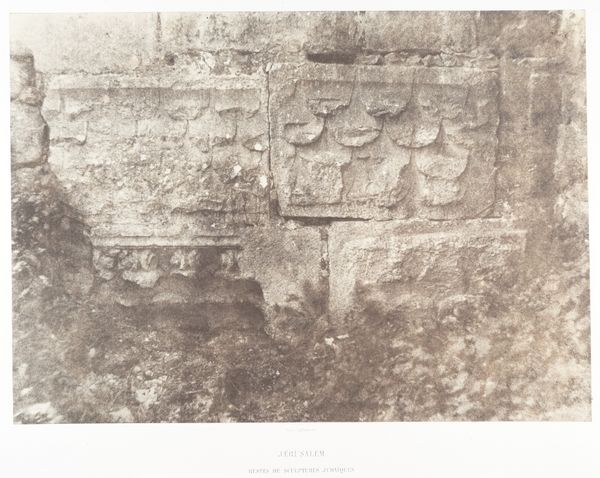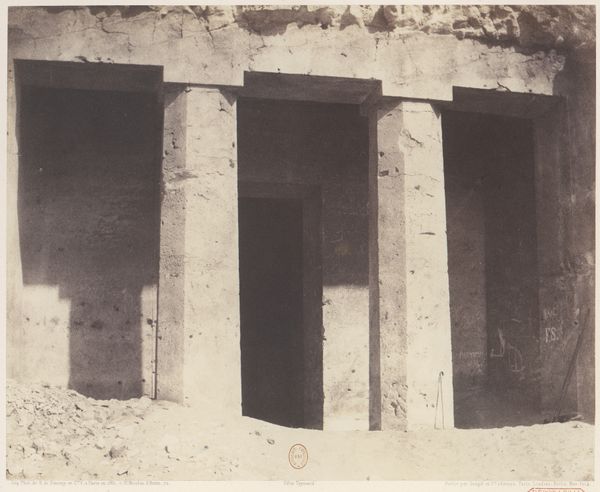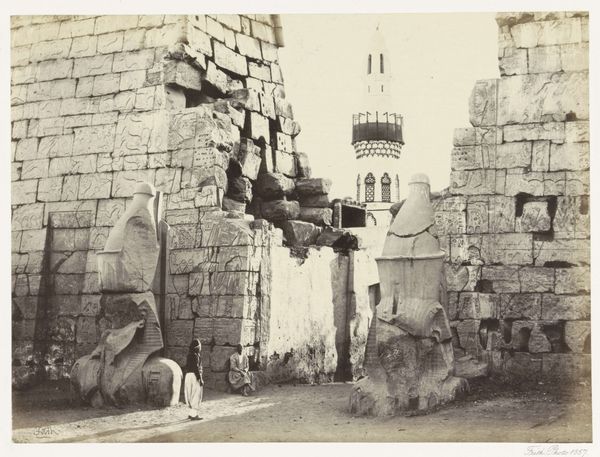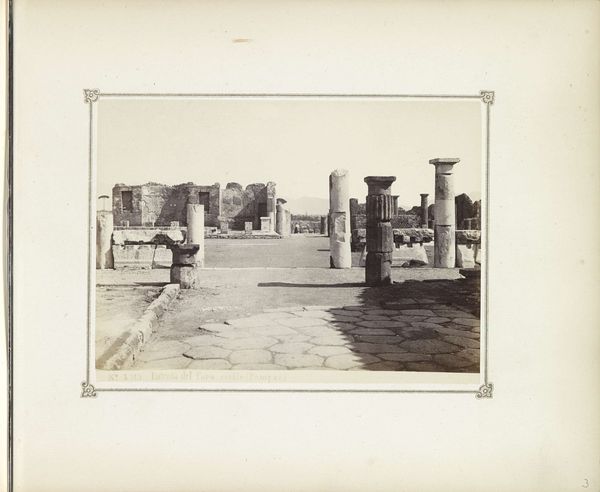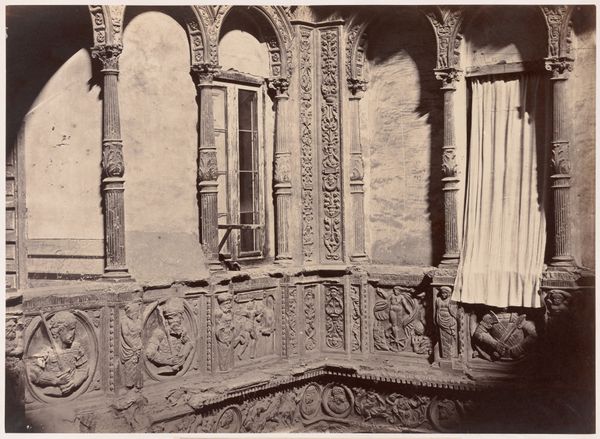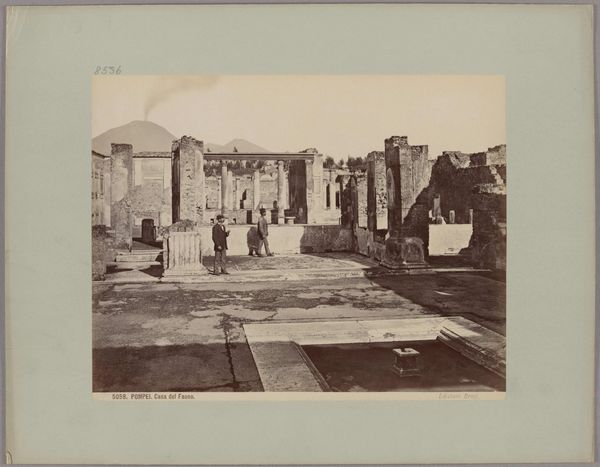![[Golestan Palace, Teheran, Iran] (Takht-i Marmor) by Luigi Pesce](/_next/image?url=https%3A%2F%2Fd2w8kbdekdi1gv.cloudfront.net%2FeyJidWNrZXQiOiAiYXJ0ZXJhLWltYWdlcy1idWNrZXQiLCAia2V5IjogImFydHdvcmtzL2YzYjg3ZmU3LTZlZGYtNDI2OS04MWVkLTY1ODEwNzg4MzM5YS9mM2I4N2ZlNy02ZWRmLTQyNjktODFlZC02NTgxMDc4ODMzOWFfZnVsbC5qcGciLCAiZWRpdHMiOiB7InJlc2l6ZSI6IHsid2lkdGgiOiAxOTIwLCAiaGVpZ2h0IjogMTkyMCwgImZpdCI6ICJpbnNpZGUifX19&w=3840&q=75)
[Golestan Palace, Teheran, Iran] (Takht-i Marmor) 1840 - 1869
0:00
0:00
daguerreotype, photography, architecture
#
landscape
#
daguerreotype
#
photography
#
islamic-art
#
architecture
Copyright: Public Domain
Luigi Pesce captured this photograph of the Takht-i Marmar, or Marble Throne, in the Golestan Palace in Tehran. Stone is the key material here, evident in the throne itself, the surrounding walls, and the spiraling column. The stone's inherent qualities—its weight and density—suggest permanence and power, fitting for a royal setting. Look closely, and you'll see the detailed carvings and intricate designs. These elements speak to the skilled labor involved in transforming raw material into refined art. The column shows how different textures and forms have been achieved. The creation of the Golestan Palace was likely a large operation, involving many craftspeople who brought different cultural traditions to the process. Ultimately, the photograph reminds us that objects like these are not just about aesthetics, but also about the human effort, skill, and social context embedded within them. It challenges us to consider the value of craft and labor in what we often perceive as simply 'fine art'.
Comments
No comments
Be the first to comment and join the conversation on the ultimate creative platform.
